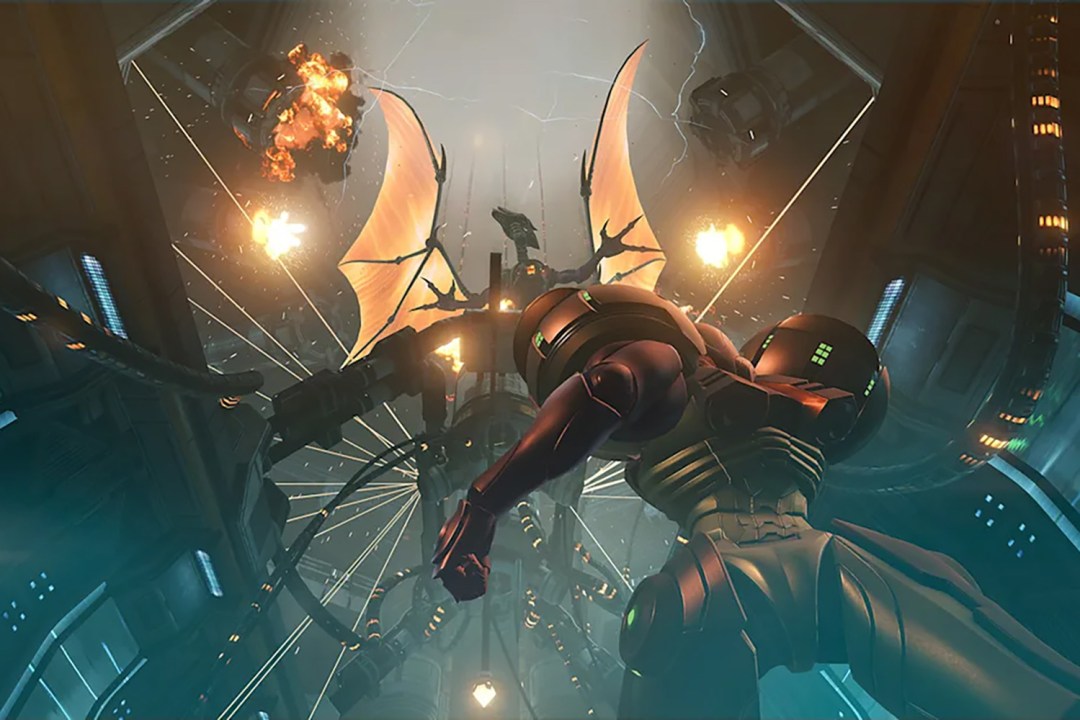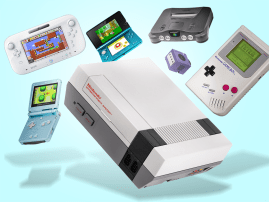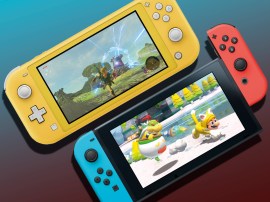Metroid Prime Remastered review: all glowed up
Samus returns in an outstanding remaster of her best 3D outing

Samus is back and looking better than ever. Of course, Nintendo’s iconic space bounty hunter had already graced the Switch with 2021’s superb Metroid Dread – but for many fans, Metroid Prime is the real deal. This was the game where she made her transition to 3D, and one which has never been bettered.
There were rumours the GameCube classic had been remastered but it still came as a shock when, much like January’s Hi-Fi Rush, Nintendo shadow dropped it onto the eShop with minimal fanfare.
Prime wasn’t just a revelation for the series: its equal focus on platforming and exploration as well as shooting would influence the FPS genre as a whole. Thanks to this masterful update, we’re pleased to say it still holds up.
Prime condition


The Switch has seen many ports of older games, though most have been from the Wii U. Fellow GameCube title Super Mario Sunshine was simply a low-effort HD port. So it’s remarkable how good Metroid Prime Remastered looks. The new and more detailed assets are as good as a full remake, while modern lighting makes the alien planet of Tallon IV come alive like never before.
Immersive flourishes from the original Prime, like how your combat visor steams up in the cold, or gets splashed by monster gunk, have been faithfully recreated. Explosion flashes still give a brief reflection of Samus’ face, too.
Gameplay remains ultimately the same as it was 20 years ago, with a story conveyed largely through environmental objects scanned using your visor. You’ll also be spending time regaining both the powers Samus conveniently loses at the start of the game, as well as new upgrades to her suit and arm cannon. If you remember getting lost between Magmoor Caverns and Phendrana Drifts, the routes and archtitecture are exactly the same.
One aspect developer Retro Studios has wisely left unchanged is the incredibly atmospheric and frankly banging soundtrack; we’d be quite fine with going off in a dark nightclub to that main menu theme. It evolves as you progress further in your exploration, just like how the space pirates hunting Samus also step up in danger to keep you on your toes when backtracking. That said, the music that comes up when you eventually encounter the ghosts of the Chozo race who previously inhabited the planet remains as stressful as ever.
Back in control


Prime Remastered may play just the same, in the sense that you’ll encounter familiar large-scale bosses (which you’d do well to scan first to figure out how to take them down) and flip the action from first to third-person whenever Samus turns into a morph ball to get around tighter spaces. Fortunately, the controls have also had an overhaul.
Early noughties 3D games had yet to standardise movement controls, so while the GameCube pad technically had twin sticks, the original Metroid Prime used its c-stick purely for weapon selection. You can opt for this classic scheme if you like, or one that uses motion aiming like the 2009 Wii port, but the new, modern twin-stick control scheme is a godsend. It makes Prime handle like any other FPS game you might have played over the the past decade.
Fortunately, the lock-on function is still intact, so you don’t actually have to worry about having a good aim once a firefight does break out. Samus’ quick strafe-dodge can still be used when locking on too, though it feels more natural to be able to strafe.
It may be more first-person platformer/adventure than shooter, but enemies do get increasingly tougher as you progress, with puzzle elements to tackling them. Certain foes are best frozen using the Ice Beam, then blown apart with missiles; others require different visors to keep track of. You have to hold down X then tap the D-pad to change your arm cannon’s properties, which can be fiddly maybe something like a weapon wheel would have been a nice addition.
Samus it ever was


We appreciate all the work that’s gone into making Prime a better looking and modern experience, but this isn’t a deluxe edition that crams in new features or bonus areas. There’s an unlockable gallery filled with concept art and models from both the remaster and original game, but that’s your lot.
Tallon IV is already such a fantastically realised world full of unexpected places and secrets, it feels unnecessary to throw in much more, but it might have been nice for completionists if the developer had added a better way to track what rooms still contain a bit of lore or data yet to be scanned.
By Nintendo standards at least, Prime Remastered it a bit of a bargain at £35. The firm had no qualms selling bare bone ports at full price in the past, so you’re getting plenty for your cash here. The lingering question now is whether the rest of the Prime Trilogy will follow suit, seeing how it won’t even be possible to buy the final game from April once the Wii U eShop closes down. Given the first Prime is the best of the three, we’ll be quite happy if Nintendo instead decides to give Wind Waker or Paper Mario the remaster treatment next.
Metroid Prime Remastered verdict

We don’t know when Metroid Prime 4 will finally land, but for now Retro Studios has shown what it’s capable of: a best-in-class remaster of the groundbreaking 3D original which looks as exciting and fresh on Switch today as when it first debuted on the GameCube 20 years ago.
Tallon IV is more detailed and lifelike than ever, while still containing the same labyrinthian designs and secrets. Admittedly you’ll still be backtracking through its areas a few more time than you’d like, but there’s usually always something new to discover with another upgrade you’ve just unlocked. For those new to Samus’ 3D adventure, it feels as outstanding as if it was a brand new game, which makes it even more of an essential purchase.
Stuff Says…
The best 3D Metroid game gets the best-looking update for the Switch
Good Stuff
Looks amazing, like a brand new title
Excellent combination of platforming, exploration and combat
Modern FPS control scheme works a treat
Soundtrack still slaps
Bad Stuff
Original game’s backtracking remains
Those Chozo ghosts



